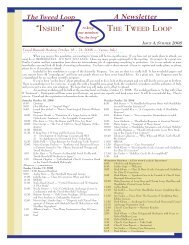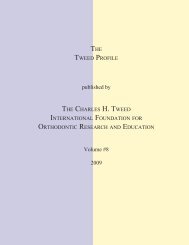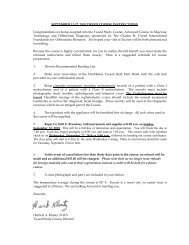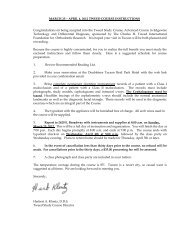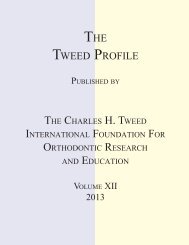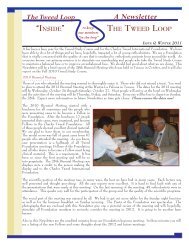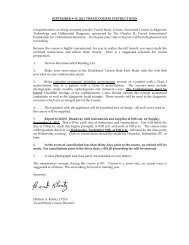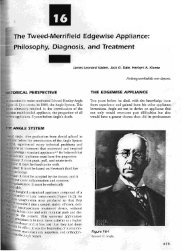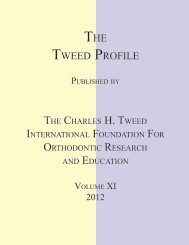© 2006 - The Charles H. Tweed International Foundation
© 2006 - The Charles H. Tweed International Foundation
© 2006 - The Charles H. Tweed International Foundation
You also want an ePaper? Increase the reach of your titles
YUMPU automatically turns print PDFs into web optimized ePapers that Google loves.
Fig. 7a. Post orthopedic cephalometric tracing (II)Fig. 7b. Pretreatment and post orthopedicgeneral superimpositionin the smile. Now the craniofacial analysis shows a CFIndex of 33. <strong>The</strong> patient will be treated without premolarextraction. A <strong>Tweed</strong> multibonded appliance is placed. <strong>The</strong>first step is to level and idealize the lower arch. Later, theupper arch is bonded and the classic levelling and closingarchwires are used (Fig 9a/9b/9c). Treatment time of thissecond phase has been greatly reduced (10 months).Because of their position, the four third molars wereremoved in the year following the end of treatment.Fig. 8. Postorthopedic dental castsAt the end of treatment, posttreatment facial photographs(Fig. 10) illustrate a well balanced face, a nice profile and apleasant smile. <strong>The</strong> posttreatment casts (Fig. 11) show a goodclass I relationship. Overjet and overbite have been corrected. <strong>The</strong>cephalometric values (Fig. 12) are ideal for a low angle patient-IMPA is 98°and FMA is 18°. <strong>The</strong> lower incisor remains in itspretreatment position. <strong>The</strong> FMA angle decreased from 23° to 18°.<strong>The</strong> vertical index increased from .81 to .89. <strong>The</strong> occlusal planeremained stable at 6°.<strong>The</strong> general superimposition (Fig. 13) shows the totalmandibular response, in height and length due to orthopedics and<strong>Tweed</strong> Merrified therapy. Local superimpositions (Fig. 14)illustrate the tooth movement, especially the increase of the lowerposterior facial height, which is favorable in hypodivergentpatients, but over all, the maintenance of the lower incisor positionwas very positive.Fig. 9a Finishing (phase II)Fig. 9b. Space closure (phase II)Fig. 9c. Posttreatment44



